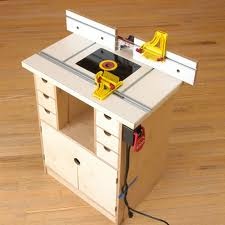Another busy work week here! Thankfully, I’ve found some time to write a couple posts. I have not had a ton of time this week to read or comment on my normal reads. Hopefully I’ll get some more free time later this week. Sucks!
After we finish up the last wall in the dining room, it’ll be time to build a router table. I initially thought I’d be building one before I began the paneling. Figured I’d build it in February! Ha! That never happened. One of the biggest challenges to remodeling and DIY’ing, in my opinion, is making accurate guesstimates for finishing projects. It takes a lot of practice and experience to properly gauge how long it will take to complete a project. I’ve been wrong so many times with guessing project time that I’ve learned to be more realistic with planning. I’ll be optimistic in my thoughts, but what I commit to verbally is much different. Lisa has even learned to stop asking when I’ll finish something. I’ve learned to stop providing a time or date in the first place. We’ll finish a project when we finish it. This raised panel project is no different. The last time we committed to finishing a home project was during our flooring work in the family room. We wanted the floors installed in time for our daughter’s first birthday party. Even for that project, to make sure we didn’t run afoul of our schedule, we gave ourselves more than a month to add the flooring. So when it comes to schedules, I try to tread lightly.
So, where was I? Oh, right, a router table! While I haven’t finished nailing down the design yet, there are some basic elements that I want to incorporate.
Here’s my design requirement list. Hopefully, whatever I come up with will meet these goals.
1. Size and height. Much like the workbench project, I’d like a router table that is comfortable to work on. Ideally, the work surface will be large enough to accommodate whatever I throw on it. For this paneling project the pieces I’ll be milling are about 2’x2′ so the router table top should be able to hold these for machining with ease.

2. Simple Design. You can tell by the two photos above that there is a wide range of options when it comes to router table design. The first table is a more basic design that can be purchased online. The second is a home made version that offers an all wood construction an adds a ton of storage. I’m going to try to build mine from plywood, but stick to a more basic structure. I don’t want the router table to be a major project. It’s just a tool.
3. Cost. I’d love to use only the scrap wood I’ve got lying around. I don’t want to spend really much of anything on this project if I can avoid it. I think I have enough plywood and melamine left over from the workbench project that I can get by. We shall see.
4. Safety. One thing I may pony up for is a paddle switch like on the wooden router table shown above. I don’t want to have to reach up under the router table to turn it off… especially considering how fast these things turn!
5. Mobility. I’m probably going to add wheels so I can move it around the basement. I’ll try to either make it light or modular for easy disassembly. The MDF panels are likely to be milled outside considering how many I have to machine. That will prevent the basement from filling up with dust! Keeping the table’s weight low will help with bringing it up and down the steps.
So that’s what I’m thinking. And I promise to have it all finished by tomorrow night. Completely. Done. No doubt about it. I promise. 😉
Hope your week is going well. Do you have issues with estimating projects?